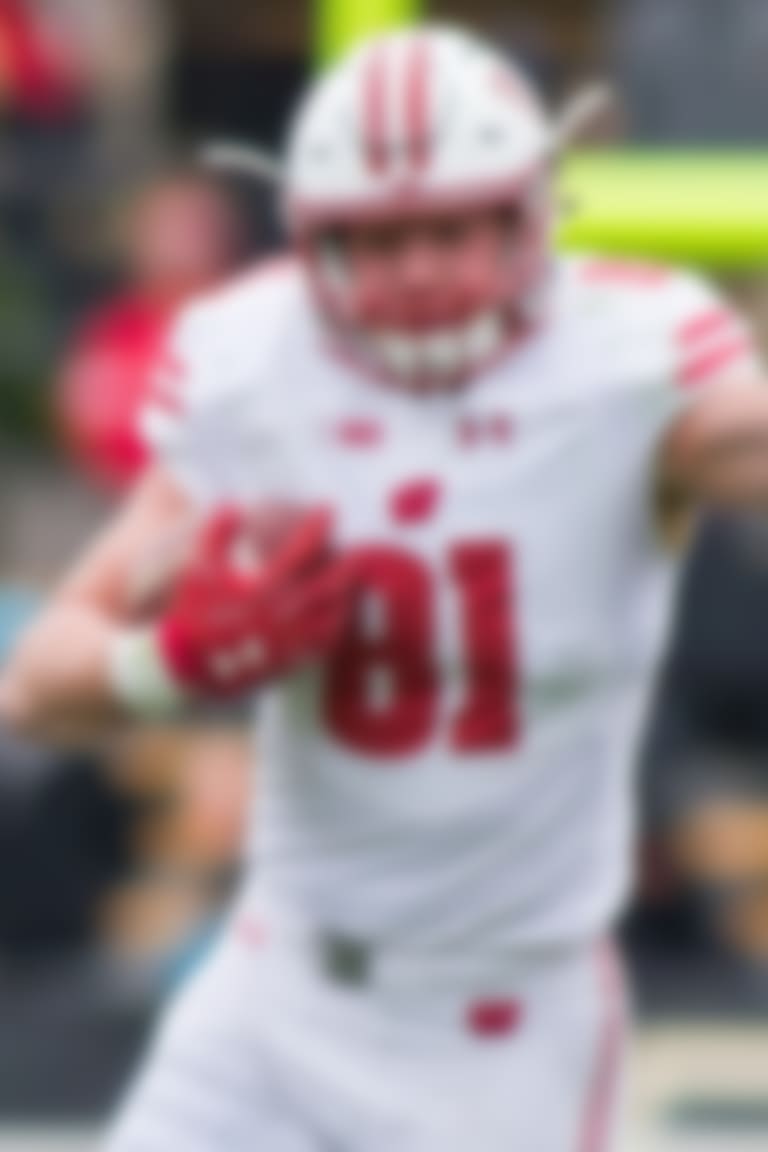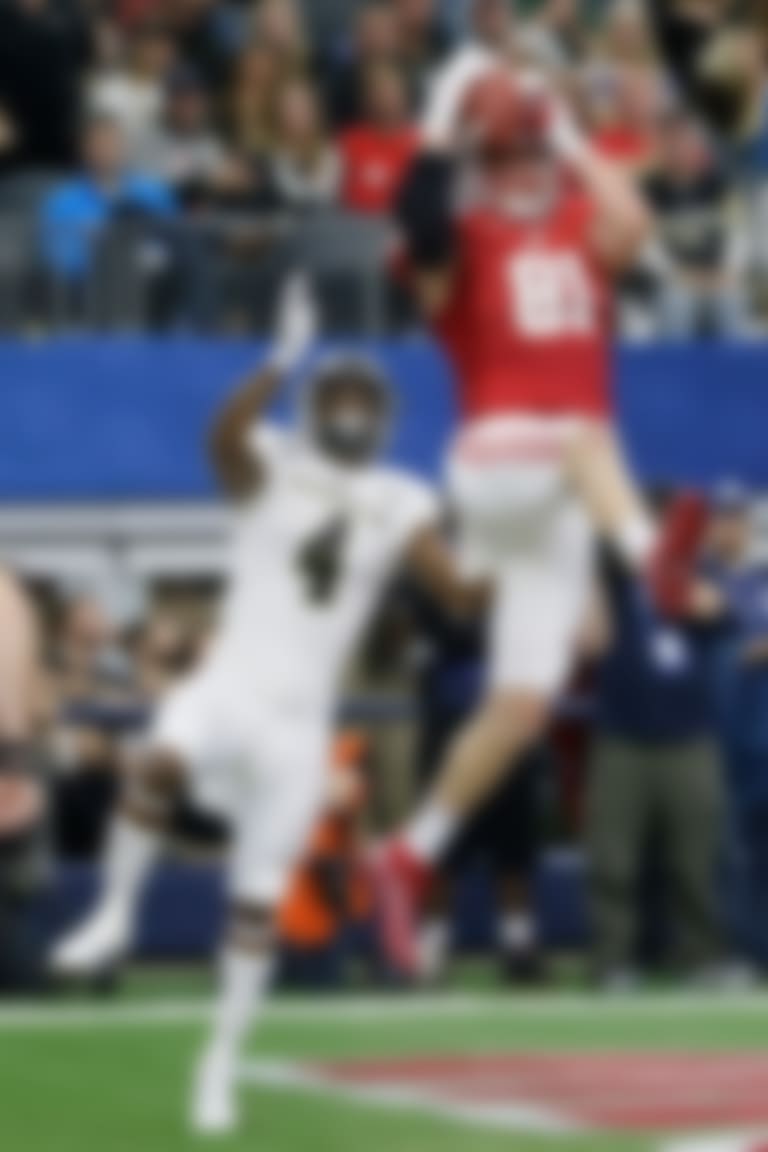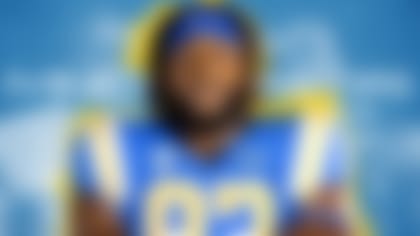Despite missing finger, Wisconsin tight end Troy Fumagalli has become a handful for Big Ten opponents, but will a nit-picky NFL scouting world have issues?
By Andy Fenelon | Published Oct. 4, 2017
Troy Fumagalli is missing a finger on his left hand. He lost it in a kitchen blender accident when he was a kid.
Or was it chopped off by a fan blade? Perhaps it was that time he reached under the lawn mower on an autumn Saturday afternoon before he started using that day of the week to abuse opposing Big Ten defenses.
Ask the Wisconsin Badgers' star tight end what happened to his left index finger and you might get a different answer every time.
"Every once in a while," Fumagalli says, "if my friends are there, and someone asks me, I'll say, 'Oh, I got bit by a shark.' "
It's all in fun for Fumagalli, who -- if truth be told -- lost the finger from a birth defect that forced an amputation the day after he was born. He's very comfortable in his own skin, discussing freely something that to him has been a non-issue for a long time.
He boasts a football resume -- including a 2016 Catch of the Year nominee in last season's Cotton Bowl -- that should remove all doubt from everyone else's mind.
But here he is, closing in on the 2018 NFL Draft, and questions about the viability of his left hand arise in a nit-picky NFL scouting world that has never before seen this -- a player playing a position that logically you might think would require the use of all five digits on his dominant hand.
"I haven't been in there (Madison) yet," said a director of scouting for an NFC team this past fall, "but it's a situation that will still need to be scrutinized."
The moment had arrived too soon. A month early, to be exact. Carrying her third child in utero, Char Fumagalli's water suddenly burst.
Doug Fumagalli, president of the local youth football league who played wide receiver at Holy Cross in the mid-'70s, was running the two-minute offense to perfection, throwing the family's weekend plans out the window en route to the hospital near their home in Naperville, Ill.
Having given birth twice before, six and eight years earlier to boys, Char knew the drill well. But this one was different, from start to finish.
She was expecting a weighty boy from previous visits to her obstetrician, and who knows how much bigger Troy would have been had his mother gone full term with him. As it was, he came out 7 pounds, 5 ounces with a month of growth unfelt.
It wasn't her son's size, however, that Char first noticed.
"I thought I saw something on him but I just thought he needed to be cleaned up," recalled Char. "I just thought he needed to be cleaned up and he'd be fine."
Char's husband wasn't so certain.
"I think there's something wrong," Doug whispered to Char, as the nurse took Troy out of the room to be cleaned and examined.
"No, I'm sure there's nothing wrong," she said back in a hopeful voice.
The nurse who had taken Troy away was not the one who returned with him. It was the pediatrician who gave Troy back to his mother, and what Char thought she had seen before he was whisked away was still present. The index finger on Troy's left hand was purple and enlarged. To Char and Doug, it stood out, well, like a sore thumb.
What Troy had was something called Amniotic Band Syndrome, a condition that occurs when the unborn baby becomes entangled in string-like amniotic bands in the womb, strangling appendages by restricting blood flow, and affecting the baby's development.
With Troy, these fibrous strings had wrapped around all 10 digits on his hands, but only the left index finger had become necrotic. Babies with ABS can lose multiple fingers and toes, even entire limbs, the pediatrician explained. Troy's issue was limited to just one finger and the rest of the impacted digits all had sensation when pinched.
"We went from feeling extremely sad to extremely lucky all within seconds," said Char, who believes her youngest son could have lost all of his fingers had he spent more time in her womb. "When they put everything in perspective you realize, 'You know what, if it's just a finger we lose, it's not the end of the world. We'll make the best of it; this will be okay."
Doug, on the other hand, was not taking the one-moment-at-a-time approach his wife was. The index finger on what would turn out to be Troy's dominant hand would be amputated the next day, right down to the knuckle, and Doug's thoughts fast-forwarded years down the line.
How would others treat him? Would he get teased in school? Would he be the last picked for his team? Would he be able to play the sport that had earned Doug -- and eventually his two older sons -- college scholarships?
"Would he," Doug asked himself, "be viewed as different?"
A series of surgeries to remove the bands on the rest of Troy's fingers followed in the year after the initial amputation; scars from those procedures are present today.
But emotional scarring from all the things Doug had feared have been, for the most part, absent. The family treated the missing finger as normal -- 6-year-old Ross even took his baby brother to kindergarten for show-and-tell -- and Troy followed suit.
In fact, most people hardly notice. Former Badgers coach Gary Andersen went several weeks into his first spring camp in Madison before seeing the index finger on Fumagalli's left glove flapping in the wind. Current Badgers head coach Paul Chryst, oblivious a month into his first spring camp, had it pointed out to him by one of his assistants.
For others -- even those close to Fumagalli -- it took even longer.
"It had to be a couple of months into our freshmen year," said Badgers safety Joe Ferguson, one of Fumagalli's best friends on the team. "I was kind of freaked out at first. He explained he was born like that. As time went by I watched how he did things -- how he would write, how he would do things. It's funny how he points at things; he points with his middle finger.
"We've tried to get him to talk about it, but he's made it not a big deal. It doesn't bother him at all and that's the attitude he takes. He tries to show other people that's the attitude they should take, too. I think he learned from a young age not to listen to what anyone else said about it, and didn't let it hinder him. That's why I think he's been so successful."















